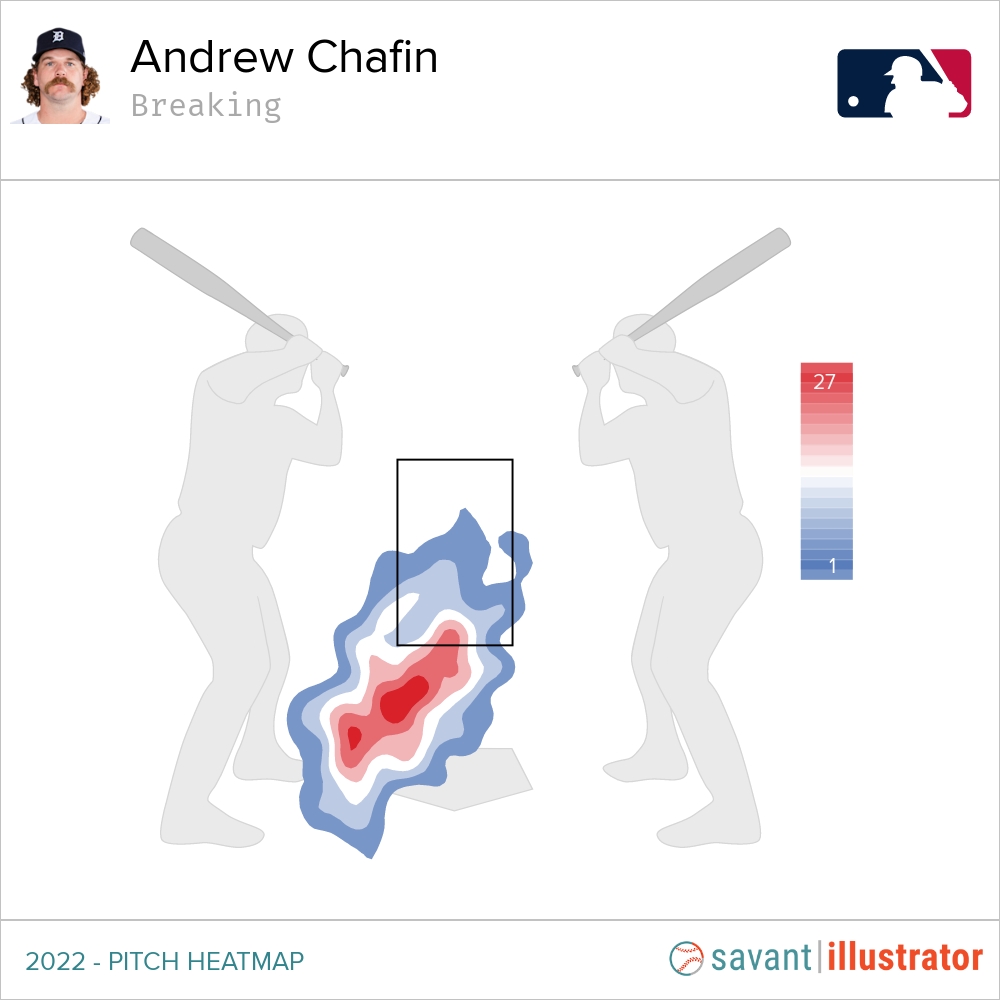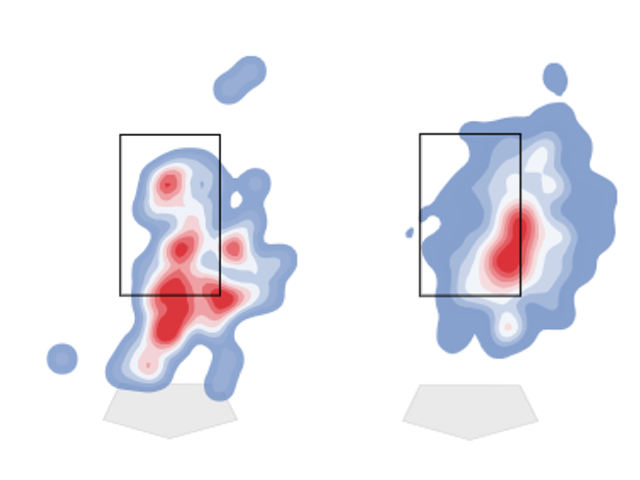© 2025 ALLCITY Network Inc.
All rights reserved.

Less than three years after departing via trade, Andrew Chafin is returning to the Diamondbacks, The Athletic’s Ken Rosenthal reported on Saturday. The deal, which is reportedly pending a physical, is said to be for one year with a club option for 2024.
While Chafin’s curly hair and mustache are every bit as dazzling as the day he left the Diamondbacks, he is a different pitcher now than he was then. He has since lost about two ticks on his heater and — somehow — is better than ever.
Chafin has moved around a lot the past few years, to say the least. The D-backs traded him to the Chicago Cubs at the 2020 trade deadline. He was then acquired by the Oakland A’s at the 2021 trade deadline. After the 2021 season, Chafin became a free agent. He ultimately signed the Detroit Tigers for two years and $13 million.
After a successful 2022 season, he exercised a clause that allowed him to opt out of the second year of his deal, hence entering free agency again. Now, he is on the brink of reuniting with the D-backs for what appears to be a lower guarantee than he would have had with Detroit.
Now that we’re clear on the timeline, let’s dig into just how good Chafin has been since leaving the D-backs. As the table shows, he has been pretty darn good.
| ERA | WHIP | FIP | K% | BB% | GB% | EV | HardHit% | |
| With D-backs | 3.68 | 1.32 | 3.20 | 25 | 10.1 | 52.2 | 88.3 | 35.1 |
| After D-backs | 2.30 | 1.04 | 3.10 | 25.7 | 7.5 | 48.2 | 87.4 | 32.7 |
The most significant difference between Chafin with the Diamondbacks and Chafin after leaving the Diamondbacks is his walk rate. In Arizona, he walked 10.1 percent of batters. After leaving, he has walked only 7.5 percent, which is below the league average.
Remarkably, Chafin accomplished that while throwing fewer pitches in the strike zone. In 2022, he threw a career-low 42 percent of his pitches — and just 21.6 percent of his sliders — in the zone. That wasn’t a problem because opposing hitters chased a career-high 33.8 percent of his pitches — and 43.6 percent of his sliders — that were out of the zone. In the end, he now walks fewer batters and strikes out more of them.
More than anything, Chafin’s slider has been the key to his success. In 2022, opposing hitters batted a microscopic .085 with a .127 slugging percentage against the offering. They did not often put it in play. When they did, it typically looked something like this:
Chafin’s slider has always been unconventional, featuring above-average vertical drop and very little horizontal action. In 2022, he took that to an even more extreme level. Among pitchers who threw 250 or more sliders, he had the third-lowest average horizontal break at just 0.3 inches.
The vast majority of sliders with such little horizontal movement also had below-average vertical movement, but that was not the case for Chafin. His slider dropped 1.7 inches more than a typical slider with similar release point and velocity. All that is to say: Few sliders around the game look like Chafin’s.
What makes the pitch more effective than anything else, though, is its location. For a lefty, slider heat maps don’t get much prettier than this:

Chafin can throw his slider for strikes when the situation calls for it, but, more often than not, he is looking to bury it low and away to lefties or low and in to righties. It worked very well for him in 2022, to say the least. Among pitchers who threw 200 or more sliders in 2022, Chafin’s 60.4 percent whiff rate on the pitch was second only to Liam Hendriks of the Chicago White Sox.
What makes Chafin especially valuable is that his slider works well to both lefties and righties. Under the three-batter minimum rule that was instituted in 2020, having success against both became increasingly important. Here is an example of Chafin’s slider against a lefty:
Here’s an example against a righty:
Overall, left-handed hitters actually fared slightly better than righties against Chafin in 2022, finishing with a .233/.320/.344 slash line compared to .214/.268/.317 for righties. For Chafin’s career, righties have better numbers, but by a relatively small margin.
In addition to Chafin’s slider, he also throws a sinker and a four-seam fastball. As with the slider, Chafin’s sinker location improved meaningfully after leaving the D-backs. Compare these heat maps from 2020 and 2022:

Chafin sprayed his sinker all over the place in 2020, both in and out of the zone. In 2022, he consistently spotted the pitch in the ideal location: down and away from righties and down and in to lefties. Granted, this isn’t a totally fair comparison. Chafin only threw 6.2 innings in 2020, and it was the worst season of his career. But, hopefully, you get the point: Chafin’s sinker command was very good in 2022.
Even so, it did not generate many whiffs. That’s not what Chafin’s sinker is for, though. The primary goal is to generate ground balls. In that regard, he did well in 2022, with a ground-ball rate of 55.4 percent.
Chafin saw a similarly high ground-ball rate on his four-seamer, which is his most-used pitch against lefties. Again, Chafin doesn’t generate many whiffs on the offering, but the movement profile of the pitch suggests it wouldn’t be great for that anyway; it has much more horizontal movement than it does vertical ride. Again, whiffs aren’t the goal. Chafin’s four-seamer still induces plenty of soft contact as it sweeps away from left-handed hitters.
On the topic of Chafin’s sinker and four-seamer, it is worth revisiting the fact that the 32-year-old has lost velocity on each of them. His sinker velocity decreased from an average of 93.5 MPH in 2020 to 92.1 MPH in 2021 to 91.6 MPH in 2022. His four-seam fastball velocity decreased in nearly identical fashion, from 93.6 MPH in 2020 to 91.8 MPH in 2021 to 91.6 MPH in 2022.
The good news for Chafin is that he has gotten better at locating both pitches. As a result, that diminished velocity has not meaningfully hurt him. The other positive is that Chafin’s velocity actually peaked in September of last year, when his average four-seamer was 92.2 MPH and his average sinker was 92.4 MPH. That works in contrast to past years, when Chafin’s velocity generally peaked in the middle of the season. Perhaps he made some sort of adjustment last season that can carry over into 2023.
Even if Chafin’s velocity diminishes in Arizona, his slider has been so good that it might not matter. The biggest key is maintaining the improved command that has been a hallmark of his game since he left the D-backs.
On paper, Chafin could be the best reliever on his new team. He is slated to join a group that will almost certainly include Joe Mantiply, Scott McGough and Miguel Castro. The remainder of the bullpen picture is unclear, but certain relievers appear to have an inside track.
As he returns to the place where it all started, Chafin is still not a household name — unless, perhaps, if you are a Diamondbacks fan — but he has been excellent over the past two seasons. Perhaps Chafin’s 2.29 ERA in that span is a bit lower than what should be expected moving forward, but his 2.3 fWAR from 2021-22 ranked 20th among all MLB relievers. For reference, no Diamondbacks reliever has managed to exceed 2.3 fWAR in a two-year span since David Hernandez had 3.1 in 2011-12.
The return of The Sheriff appears to be the icing on the cake of a relatively active offseason for the D-backs.
Follow Jesse Friedman on Twitter
Top photo: Denny Medley/USA TODAY Sports
Get Arizona's Best Sports Content In Your Inbox!Become a smarter Arizona sports fan with the latest game recaps, analysis and exclusive content from PHNX's writers and podcasters!
Just drop your email below!
Comments
Share your thoughts
Join the conversation



